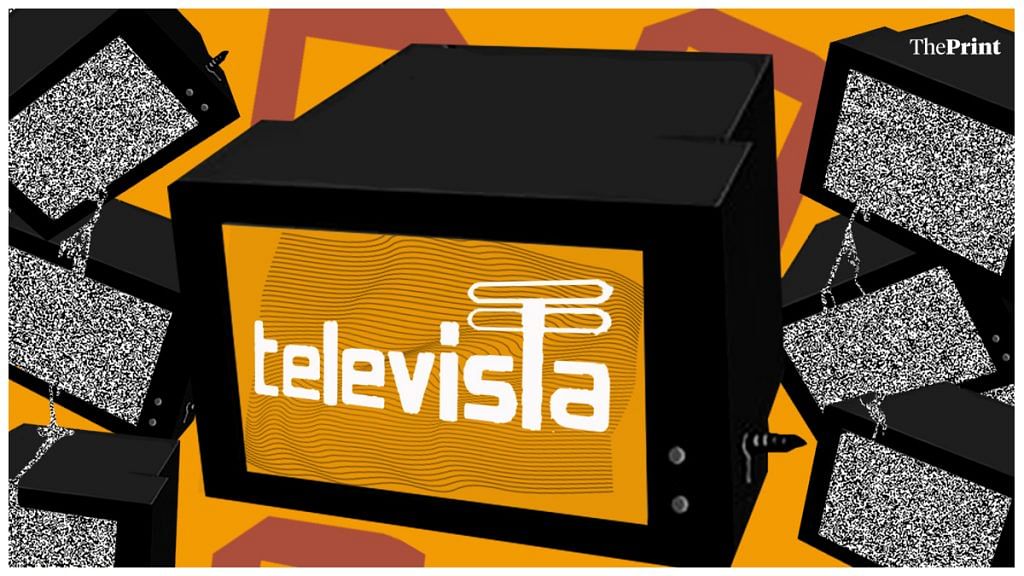New Delhi: In the 1970s, Indians jostled in long queues outside the cinema houses for their regular dose of entertainment. In those days, buying a television set was a novelty. To watch the only available channel, Doordarshan — which played a usual menu of Chhaya Geet, a programme of Hindi film songs, and Samachar, the daily broadcast of Hindi news at 9 pm — many Indians would gather at the house of the one neighbour who owned a TV set.
Televista was one among the several brands launched to lure those potential customers to buy their own TV, some day, along with Oscar, Beltek, Weston, Nelco, Salora, Bestavision and Crown.
While Weston and JK Electronics were the most popular brands, Televista, thanks to its aggressive marketing strategy, soon captured the market, as detailed in a book titled Gandhi Meets Primetime: Globalization and Nationalism in Indian Television by Shanti Kumar.
In 1972, the chatty, girl-next-door Tabassum’s first-ever talk show, Phool Khile Hain Gulshan Gulshan, was launched and became massively popular. Sensing an opportunity, Televista, in the same year, launched a national advertising campaign with a full-page colour ad and the tagline: ‘Televista. The Big Name in TVs’.
In its series of advertisements, it made use of another tagline to showcase the brand’s technological advancements and superior colour quality: “Televista for that cinema screen reality.”
“The brand played on the nation’s craze for movie going and programmes such as Phool Khile Hain to find more customers. The message from its advertisements was loud and clear,” recalls brand consultant and ad maker Prahlad Kakkar.
Mastering the art of advertising, Televista launched another ad that featured a television set with a zoom image of the sitar player’s hand. The slogan went: “If you have seen the flashing fingerwork of Ravi Shankar, would you settle for the second best?”
Styled similar to another TV brand Dyanora, Televista was popular for its “pure teak wood” made cabin box with shutters on both sides. “The shining wood cabin looked exactly like Dyanora TV,” Kakkar recalled. Sold in two models — Playmate and Elite — the company boasted of latest TV technology, use of integrated circuitry and latest electronic valves for sharp and clear picture quality.
“The brand heavily advertised the feature of ‘quick’ doorstep after sales service and one-year guarantee, which worked in its favour,” explains Santosh Sood, a brand consultant and former COO of advertising agency Rediffusion Y&R. “However, the brand name worked phenomenally well in its favour. The market was flooded with TV brands and the easiest name was Televista. It sounds like a generic name of television and had high recall value.”
So many brands, but
The strategy worked for a while. But “In 1975, Televista found itself slipping into the unenviable position of being the ‘second best’ when Weston took over the mantle of being the market leader…,” Shanti Kumar wrote in his book.
Every television brand launched in 1970s claimed to be technologically superior than the other. For instance: Dyanora TV’s poster pitched it as “pure sound, superb clarity, elegant looks.” Weston promoted its brand as the “self-appointed electronics people of India” in an advertisement in the inside front cover of India Today whereas Televista promoted itself on grounds of “best quality” and Crown TV said its product had “unmatched quality”.
However, the reality was different. “While all of the TV companies claimed to provide the superior quality of electronics none of these companies were producing the components in India. Either they were buying it from Taiwan or Korea and just assembling in India,” Kakkar explains. These television sets were based on “hybrid design”, which had vacuum tubes, valves and transistors requiring large amount of electricity and hence, generating high amount of heat. Due to heat, the chances of failure of other TV components was high.
And then, with the economic reforms of the 1990s, international brands such as Sony, Phillips, Samsung and LG took over. While Televista still exists, it is now being manufactured and marketed by a different set of owners, Raltronics Marketing India, and is hardly seen in homes now. But for the generation that saw the TV phenomenon take its first, baby steps in India, Televista is an indelible part of those memories.
